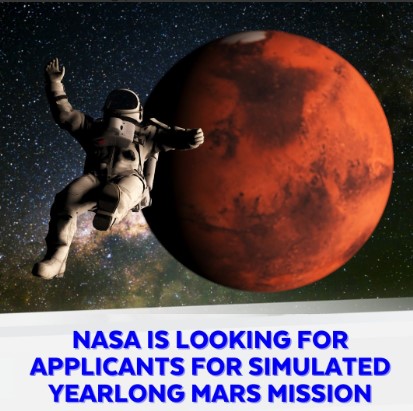NASA, the renowned space agency, has embarked on an ambitious mission to simulate life on Mars through the Crew Health and Performance Exploration Analog (CHAPEA) mission. This groundbreaking endeavor aims to study human responses under the rigors of long-duration spaceflight conditions, paving the way for future human missions to the Red Planet.
A Milestone Achievement
The CHAPEA mission has achieved a significant milestone as the first crew marked 100 days inside the 1,700-square-foot habitat on October 3. Comprising four dedicated volunteers, this crew commenced their journey on June 25 at NASA’s Johnson Space Center in Houston, immersing themselves in a 378-day Mars surface simulation.
Simulating Life on Mars
Throughout the mission, the crew is engaged in a myriad of activities mirroring those that future astronauts will undertake during an actual Mars mission. From simulated spacewalks and robotic operations to habitat maintenance, personal hygiene routines, exercise regimes, and crop cultivation, the crew experiences the full spectrum of challenges expected on the Martian surface. Adding to the authenticity, the crew grapples with Mars-realistic communication delays of up to 22 minutes one-way.
The Habitat: Mars Dune Alpha

Image from NASA Website
The habitat for these simulations is the Mars Dune Alpha module, spanning an area of 1,700 square feet. Nestled within this space, crew members live and work, confronting challenges akin to those encountered during a mission on Mars. From resource limitations and equipment failures to communication delays and environmental stressors, the habitat faithfully replicates the complexities of life on the Red Planet. Equipped with state-of-the-art systems and technologies, including life support, power, and communication systems, Mars Dune Alpha provides a comprehensive platform for the crew’s endeavors.
Recruitment and Exploration

As NASA advances its mission to Mars, the agency is actively seeking participants for this unparalleled opportunity to simulate life on a distant world. The analog missions, including three one-year Mars surface simulations based at NASA’s Johnson Space Center, offer a unique avenue to explore human responses under prolonged spaceflight conditions. While the cost and estimated launch time for this simulated Mars mission in India remain undisclosed, NASA’s recruitment drive underscores the agency’s commitment to advancing human space exploration. Deadline for applicants is Tuesday, April 2 to apply to NASA Mars Mission click her.
Conclusion: Forging Ahead in Space Exploration
In conclusion, NASA’s CHAPEA mission represents a pivotal step forward in humanity’s quest to explore and eventually inhabit Mars. By subjecting volunteers to the challenges of long-duration spaceflight in a simulated Martian environment, NASA aims to glean invaluable insights and develop critical technologies for future missions to the Red Planet. As the first crew celebrates their milestone achievement within the confines of Mars Dune Alpha, th










